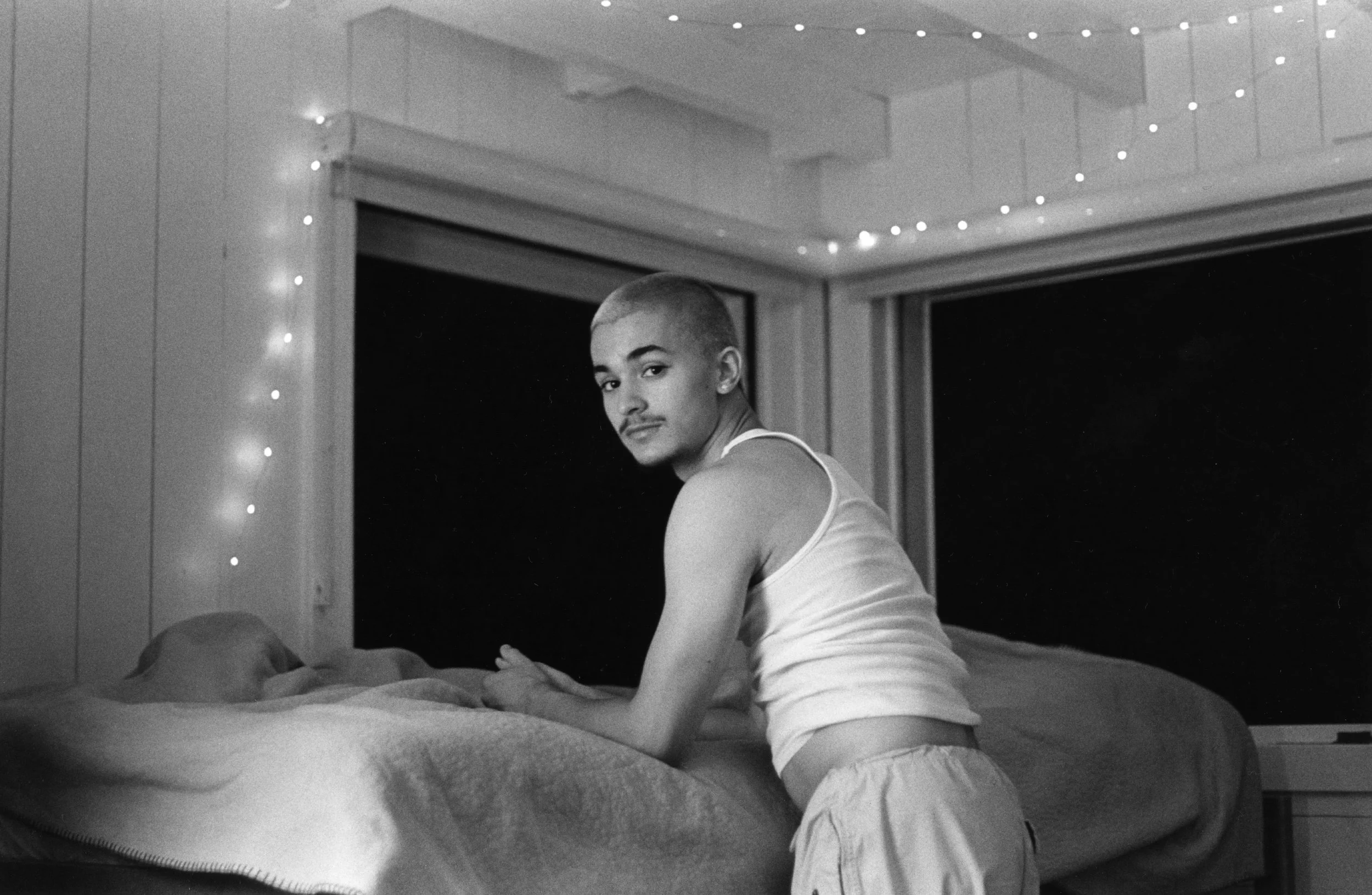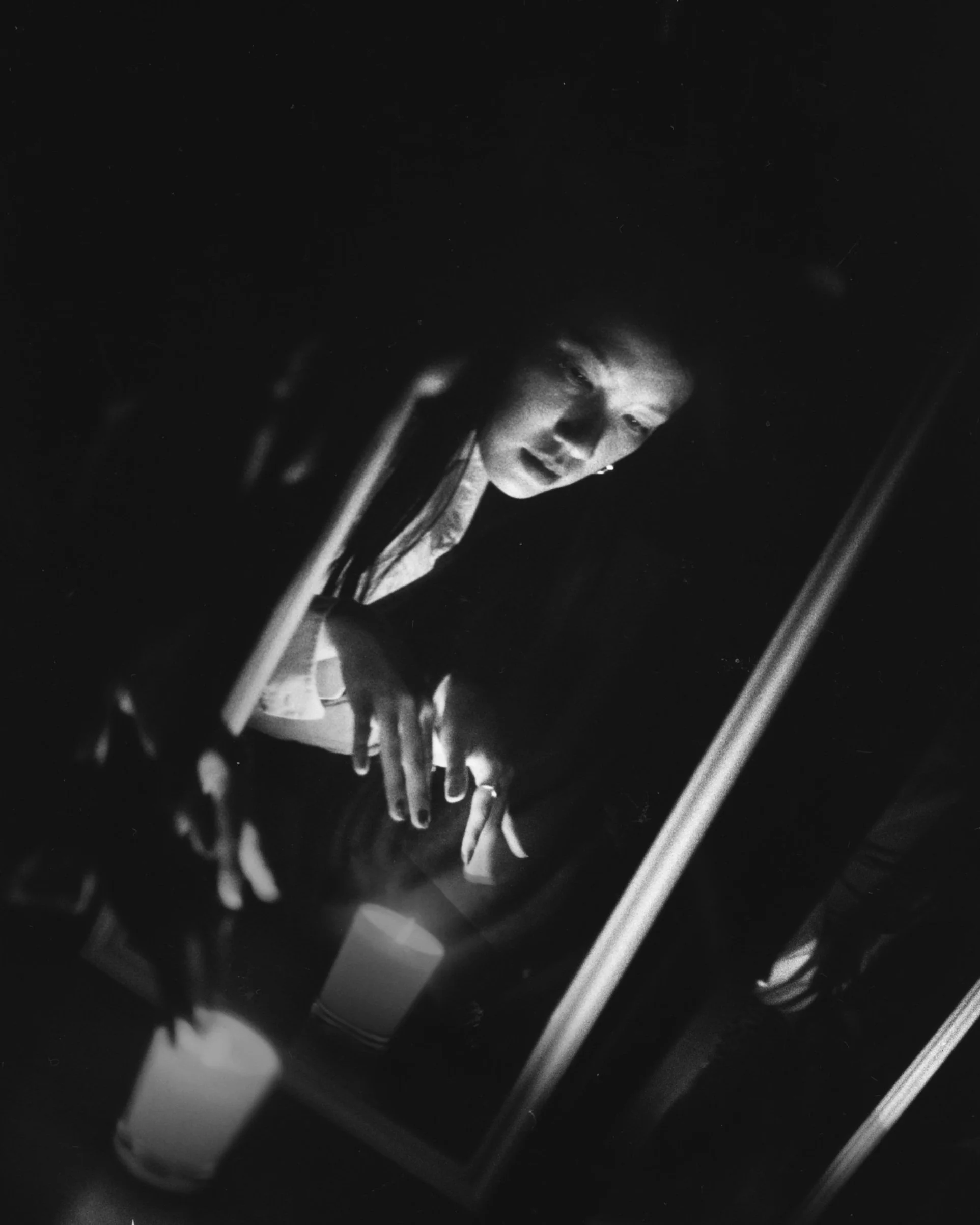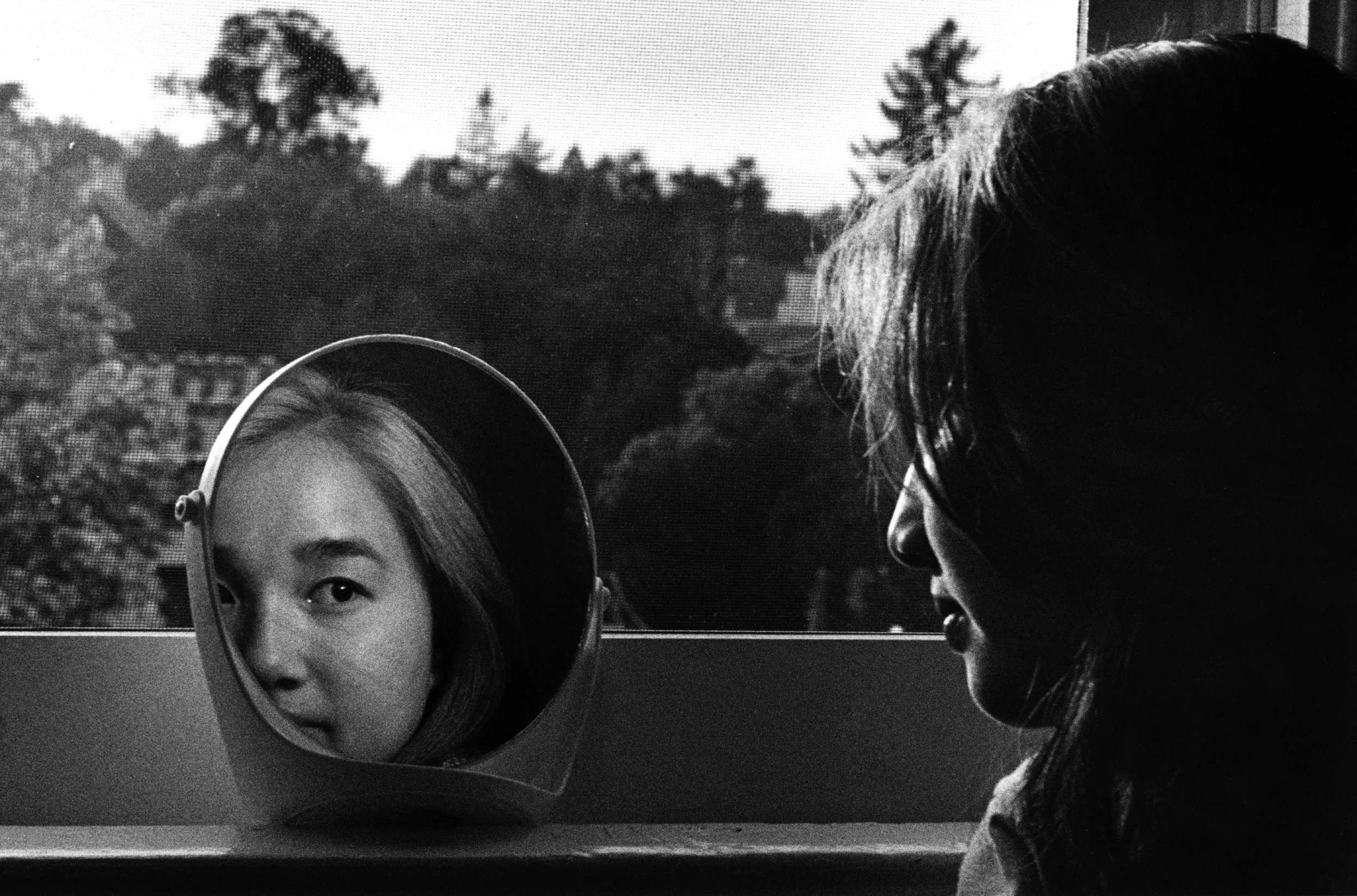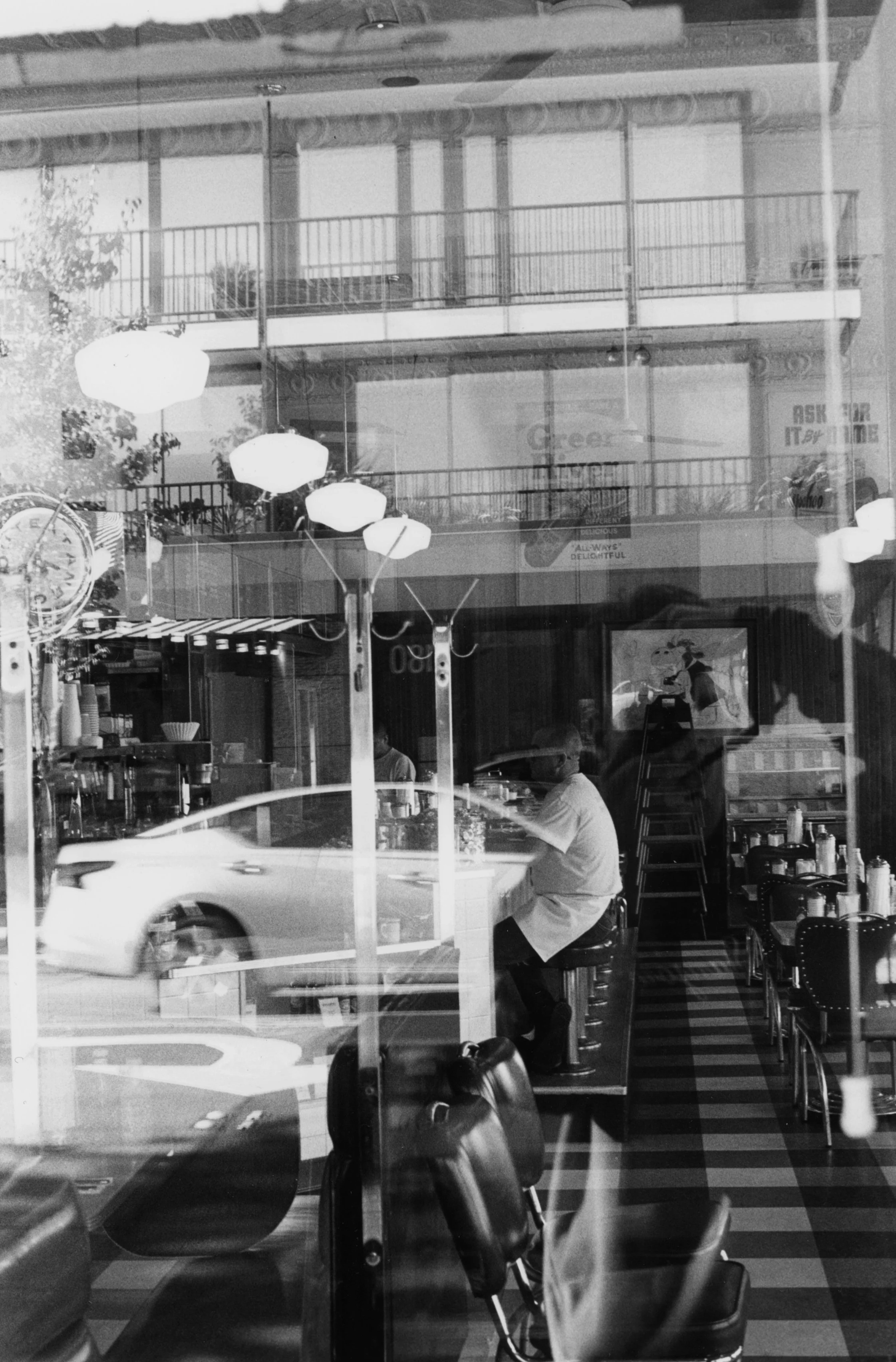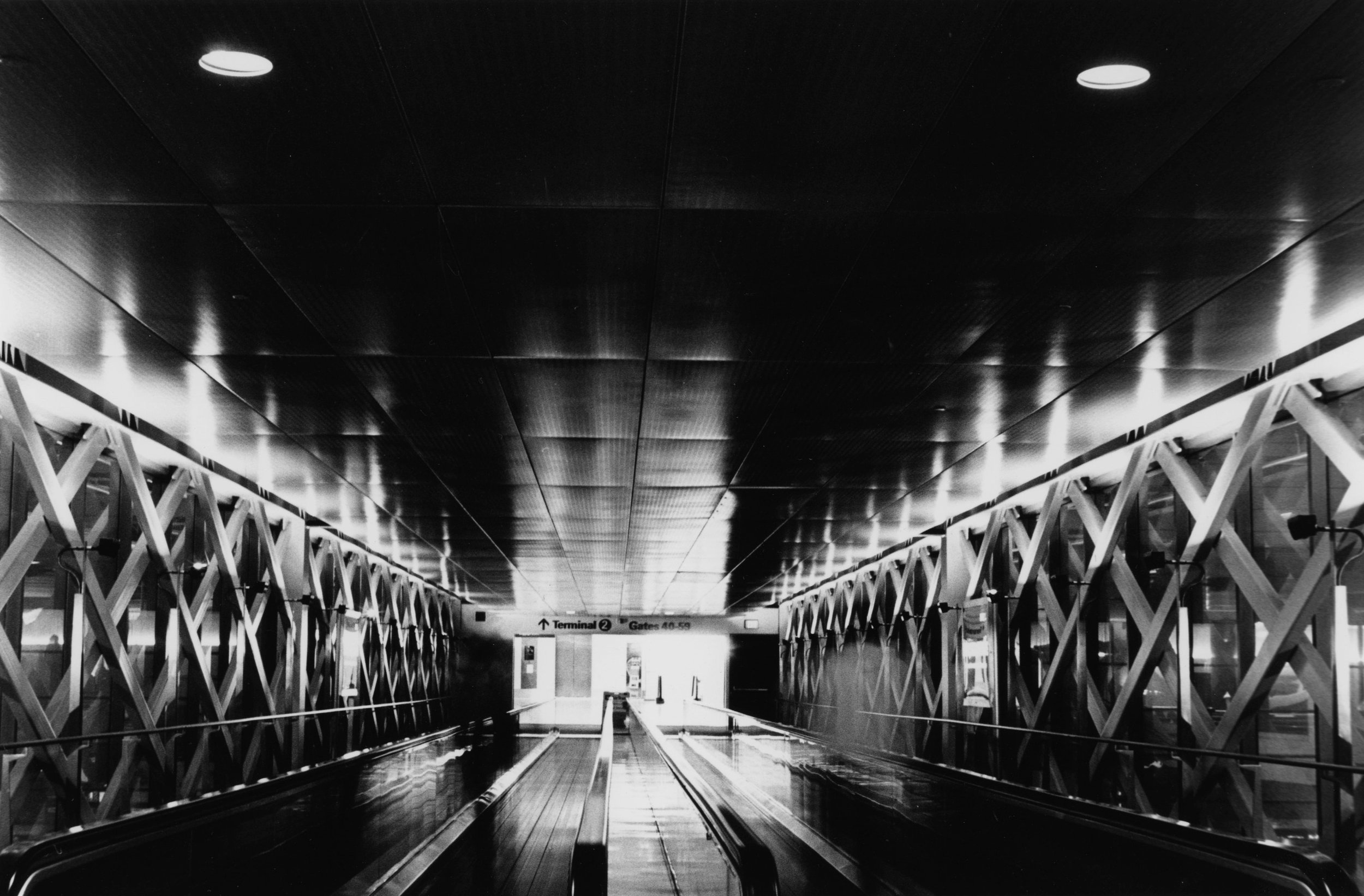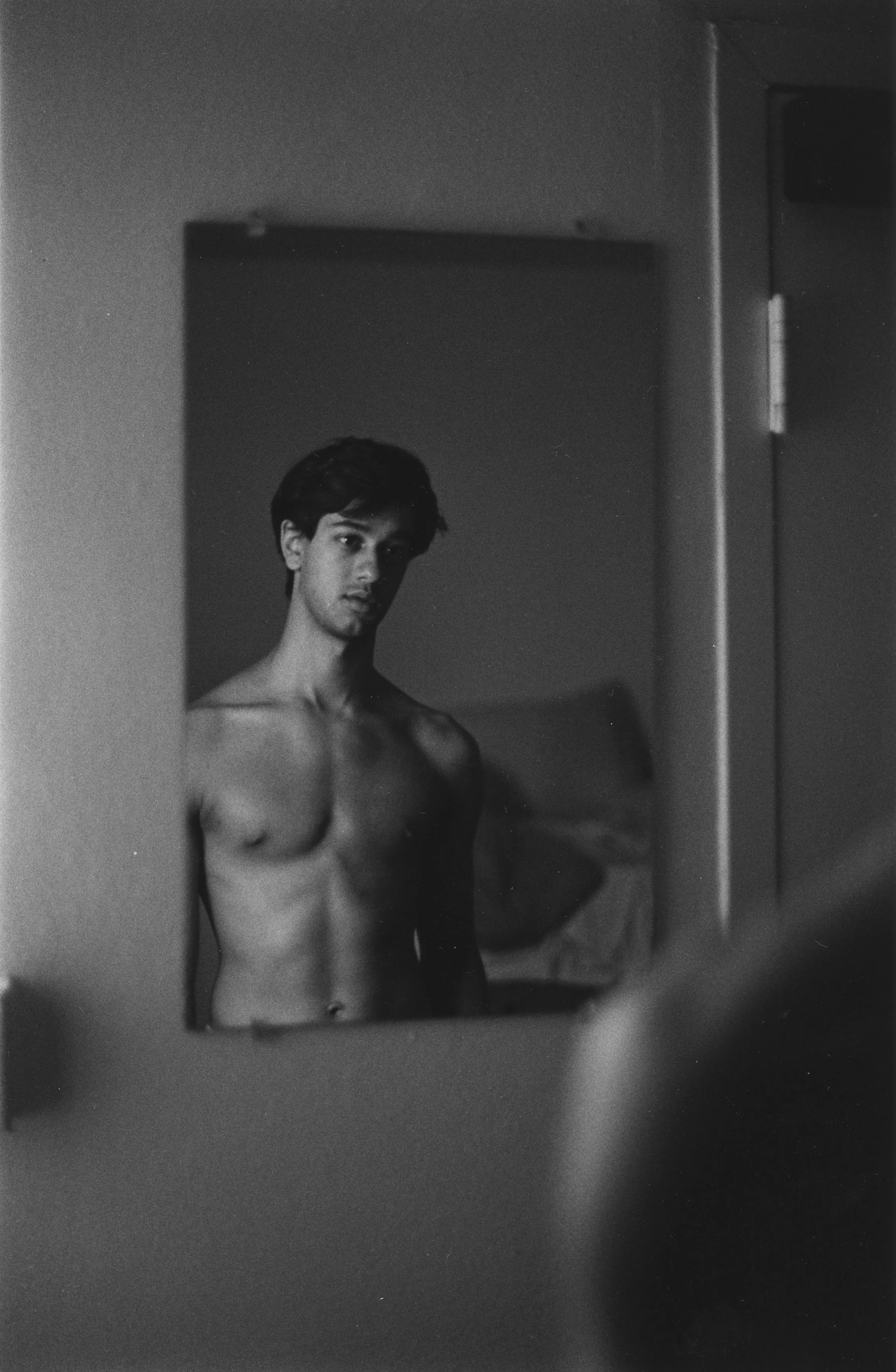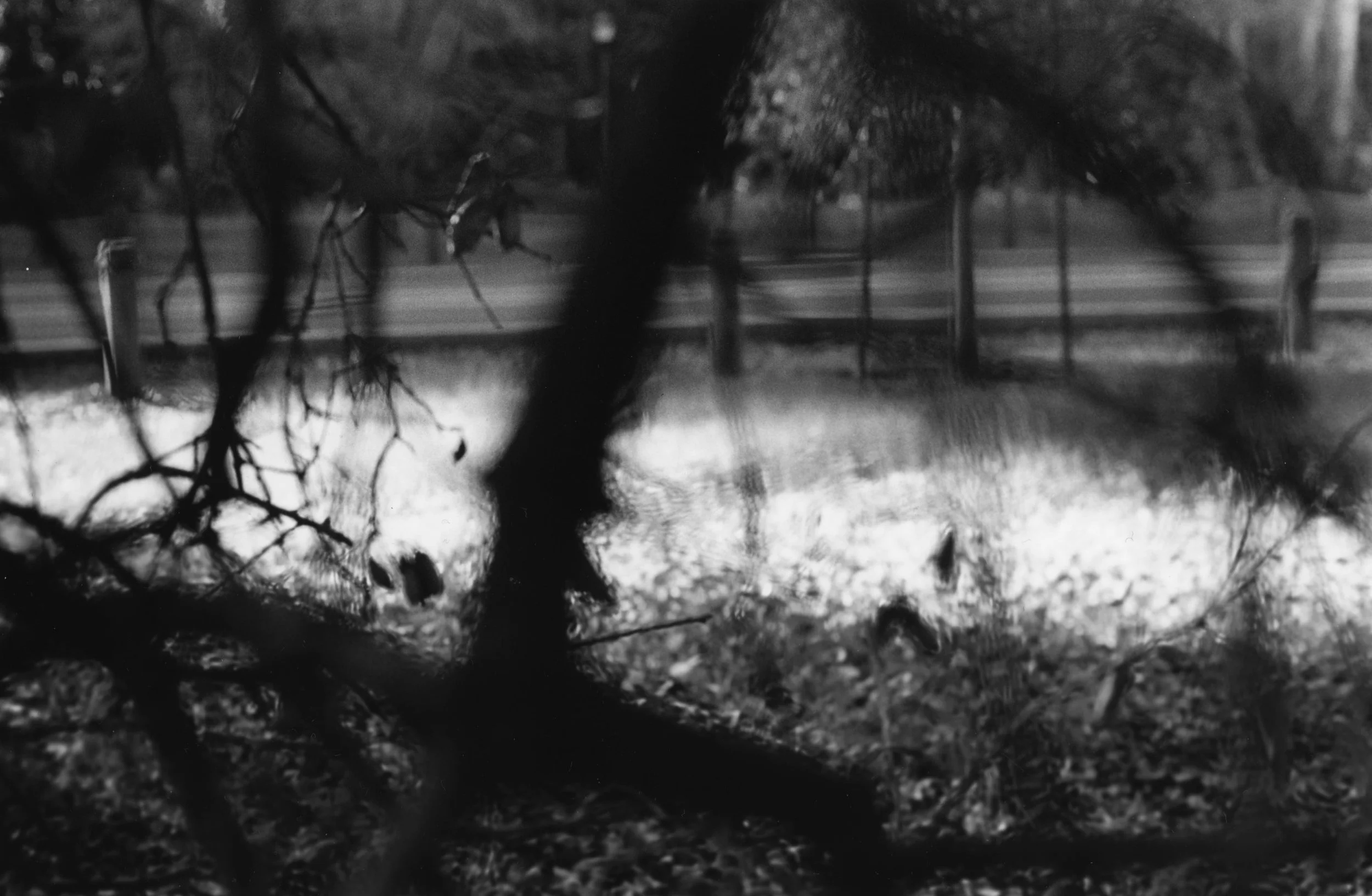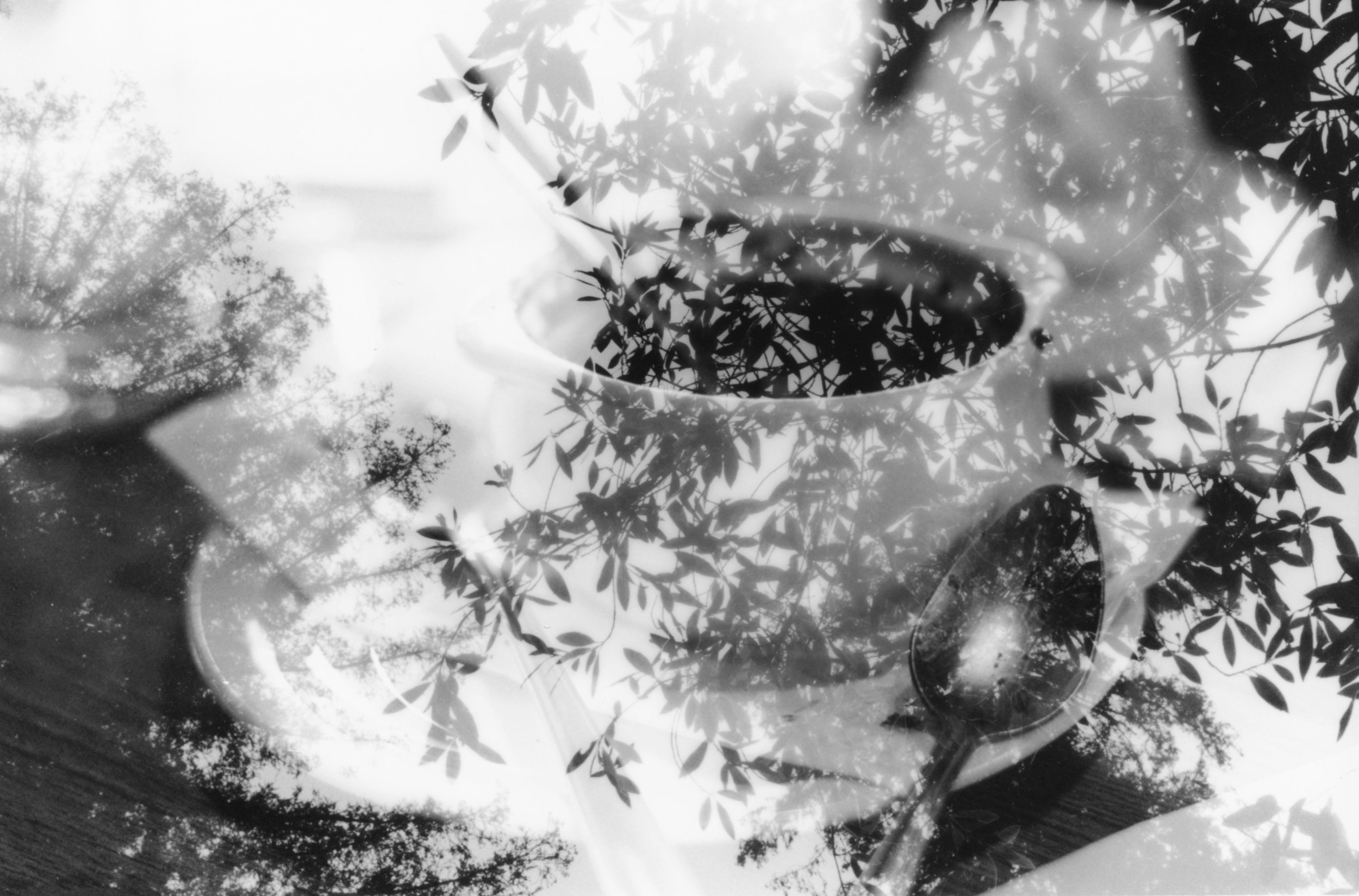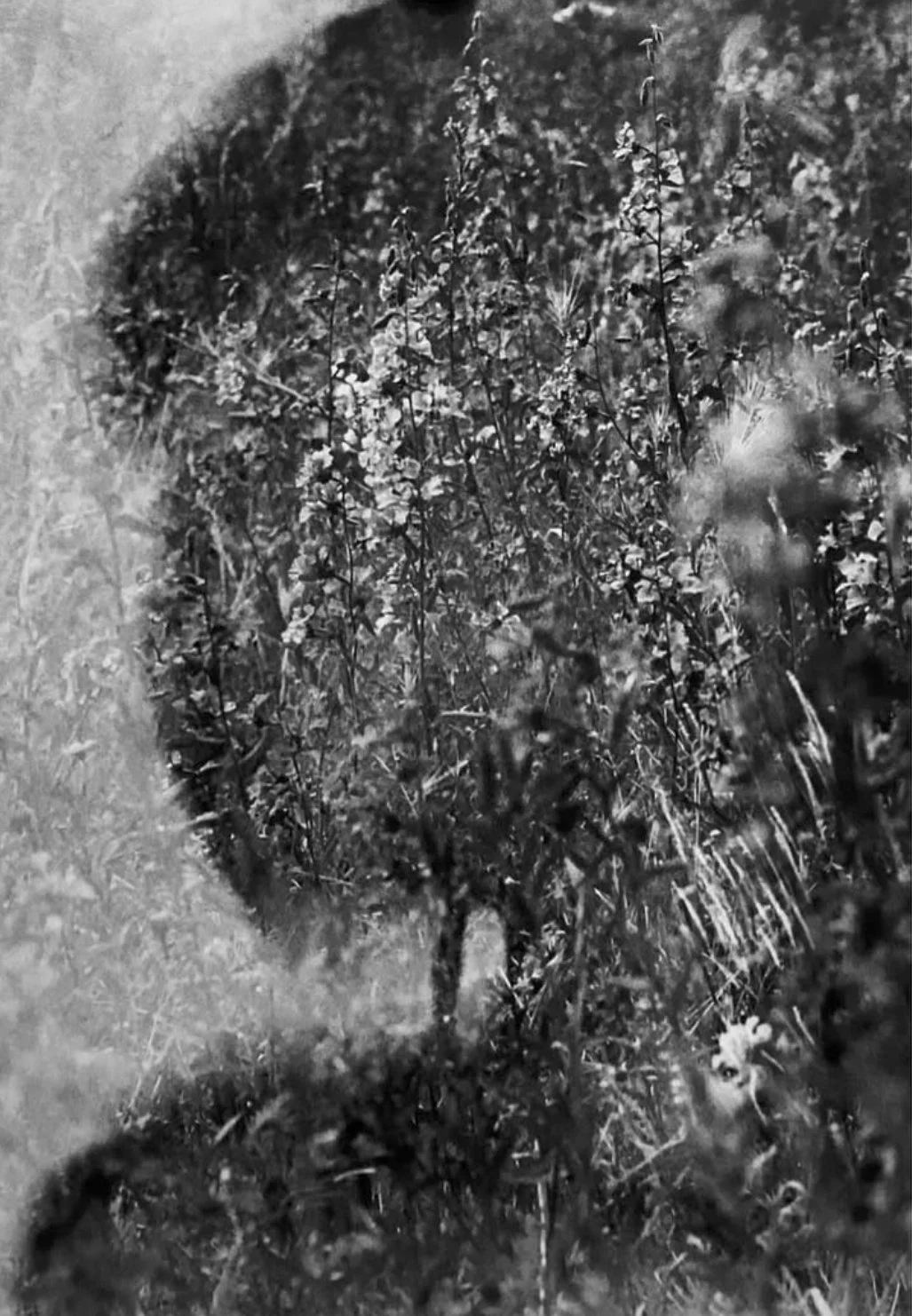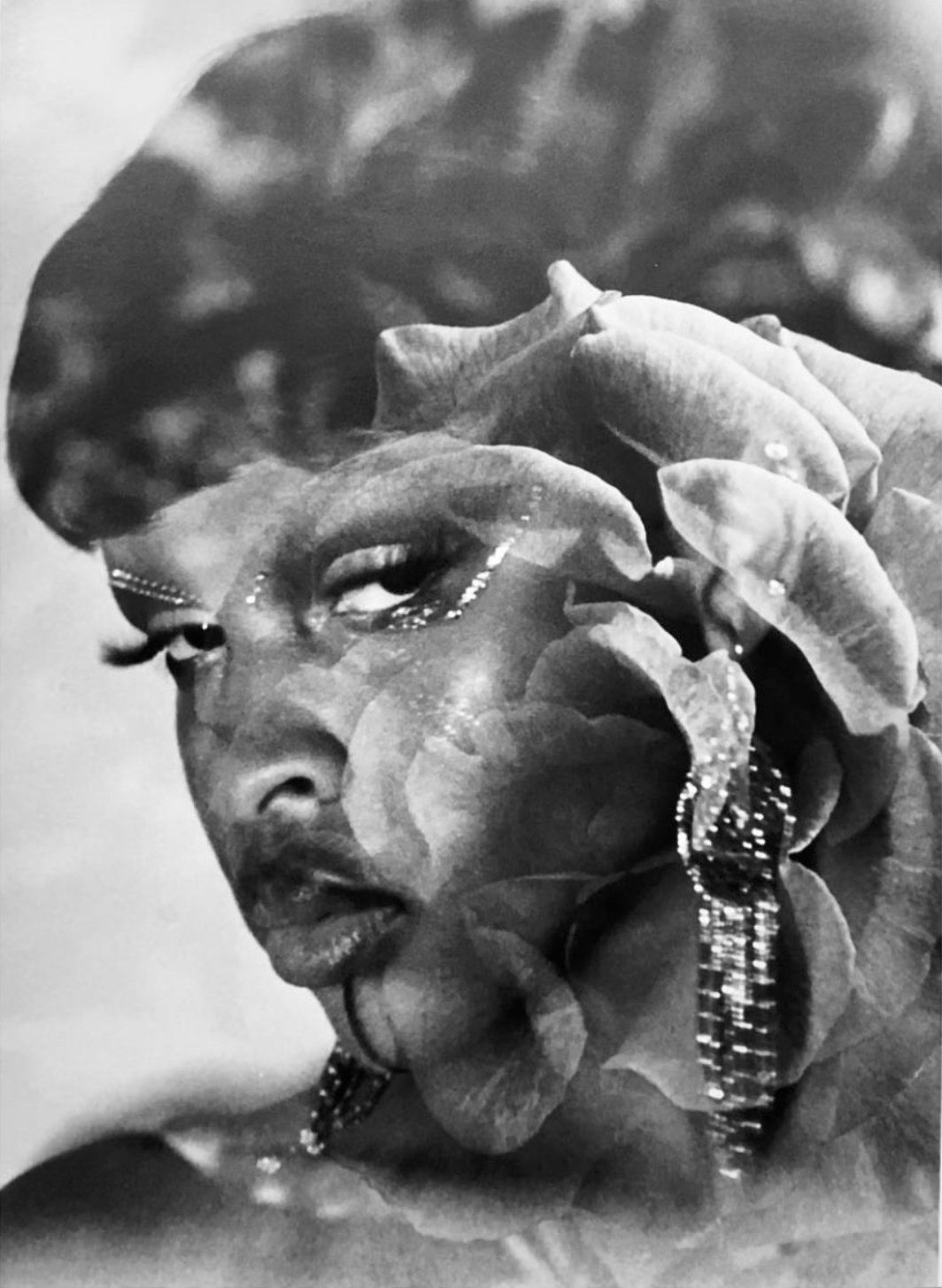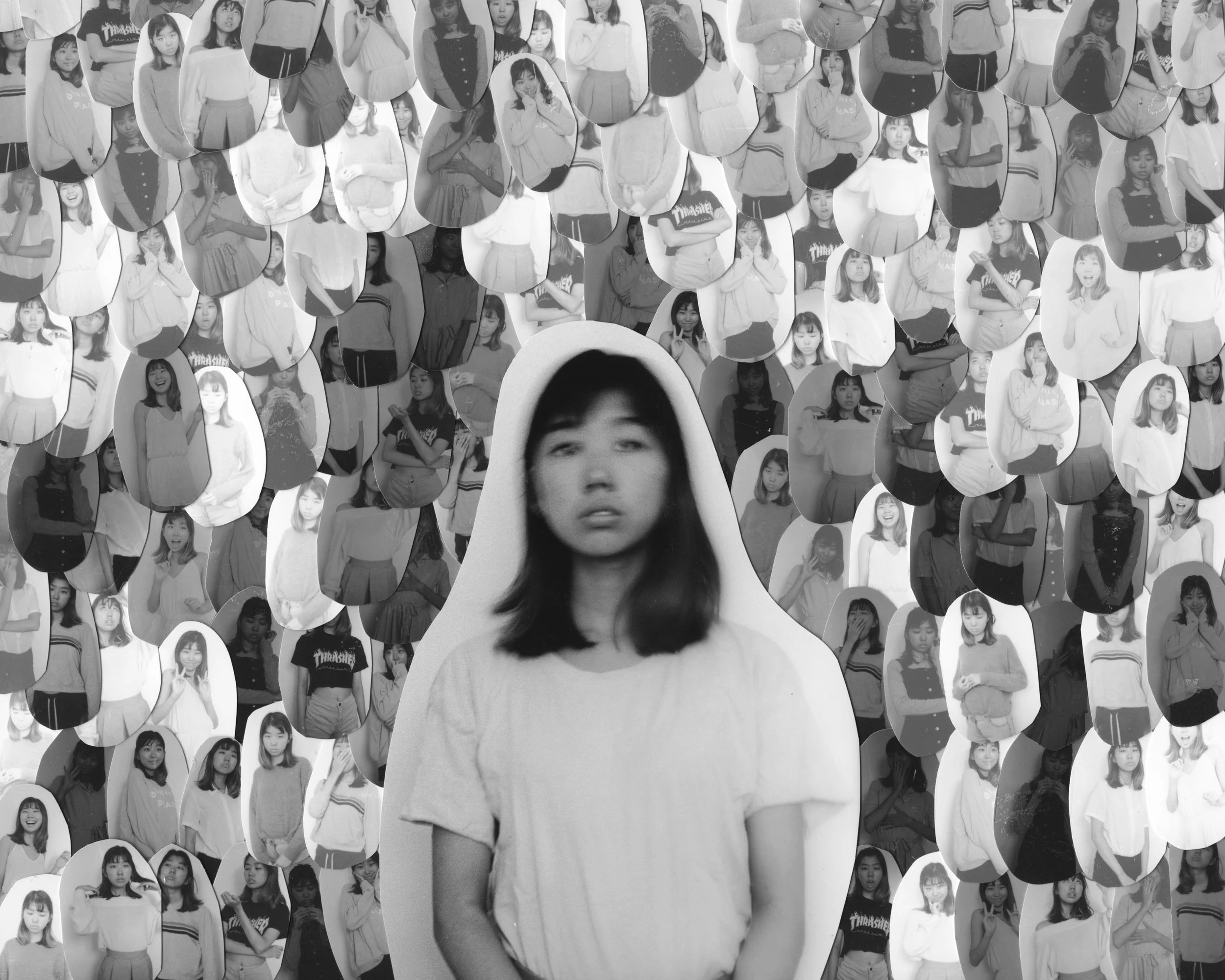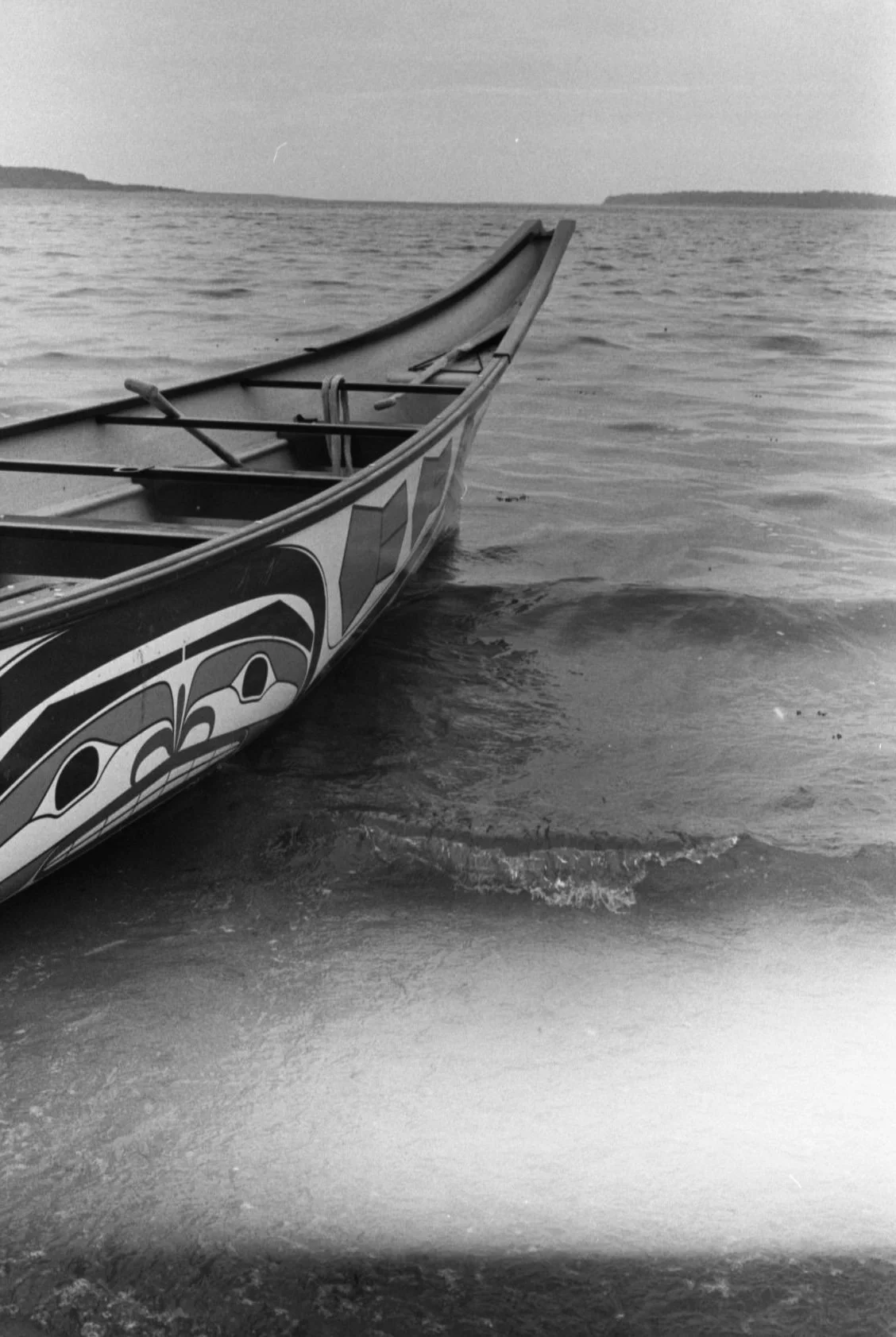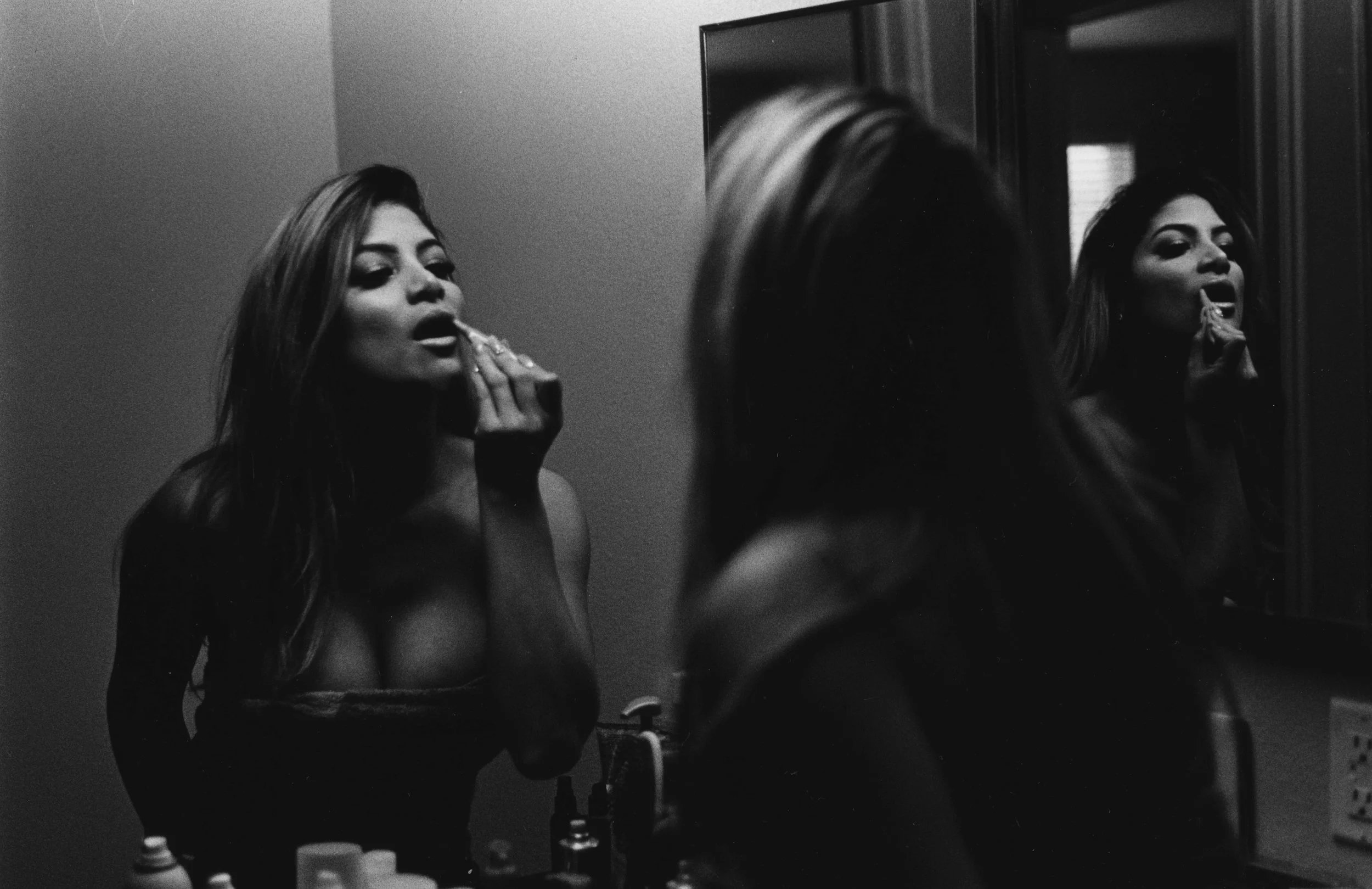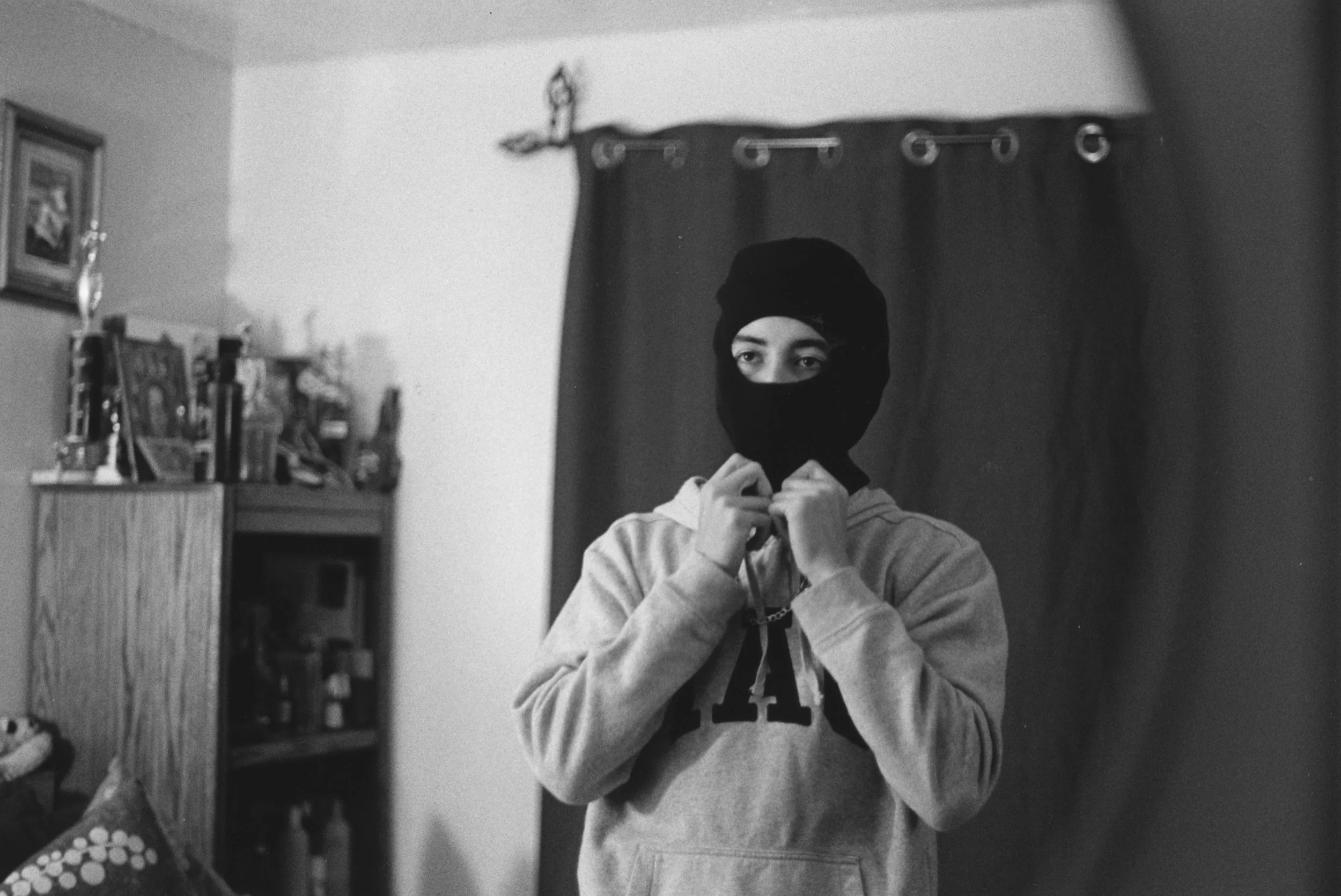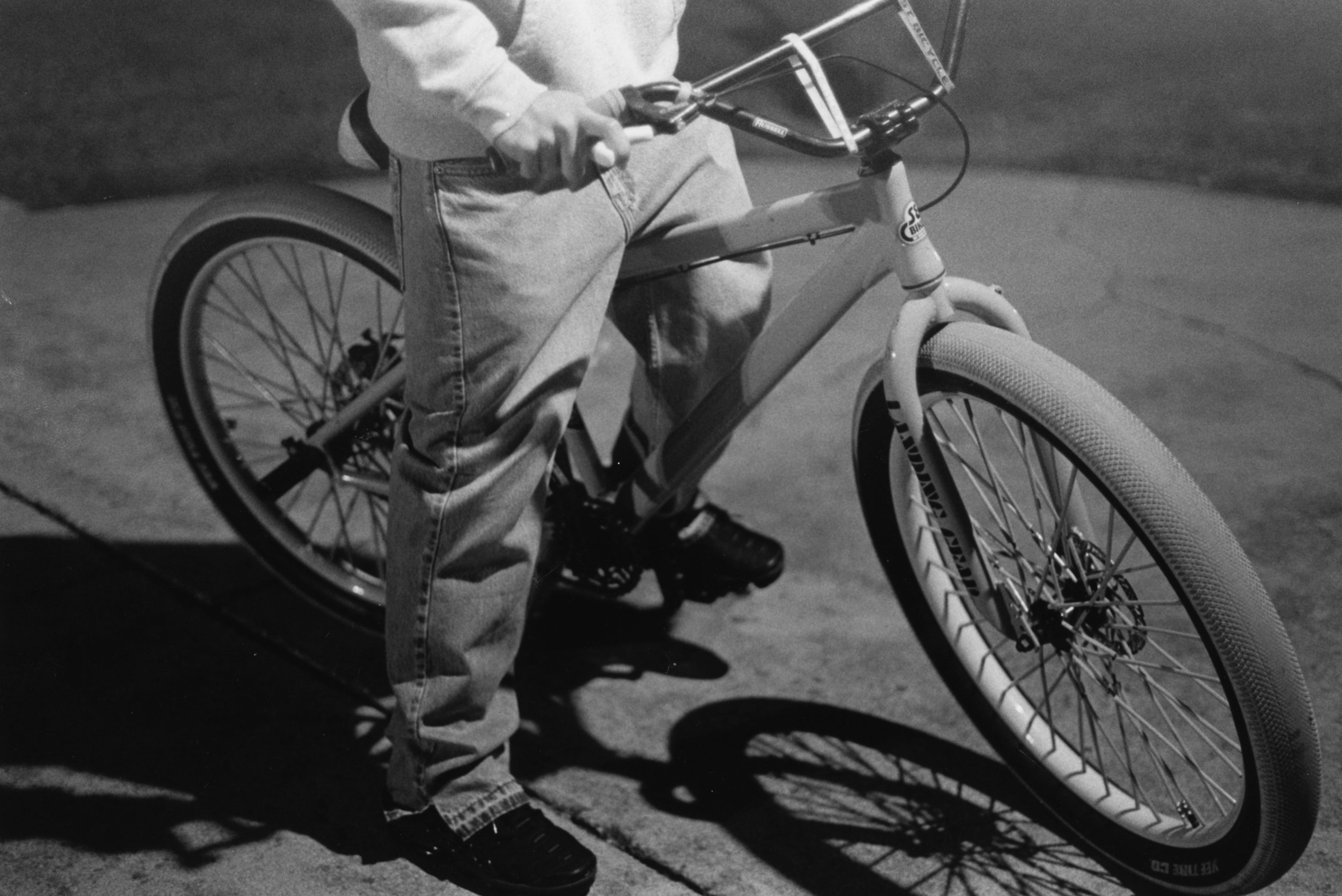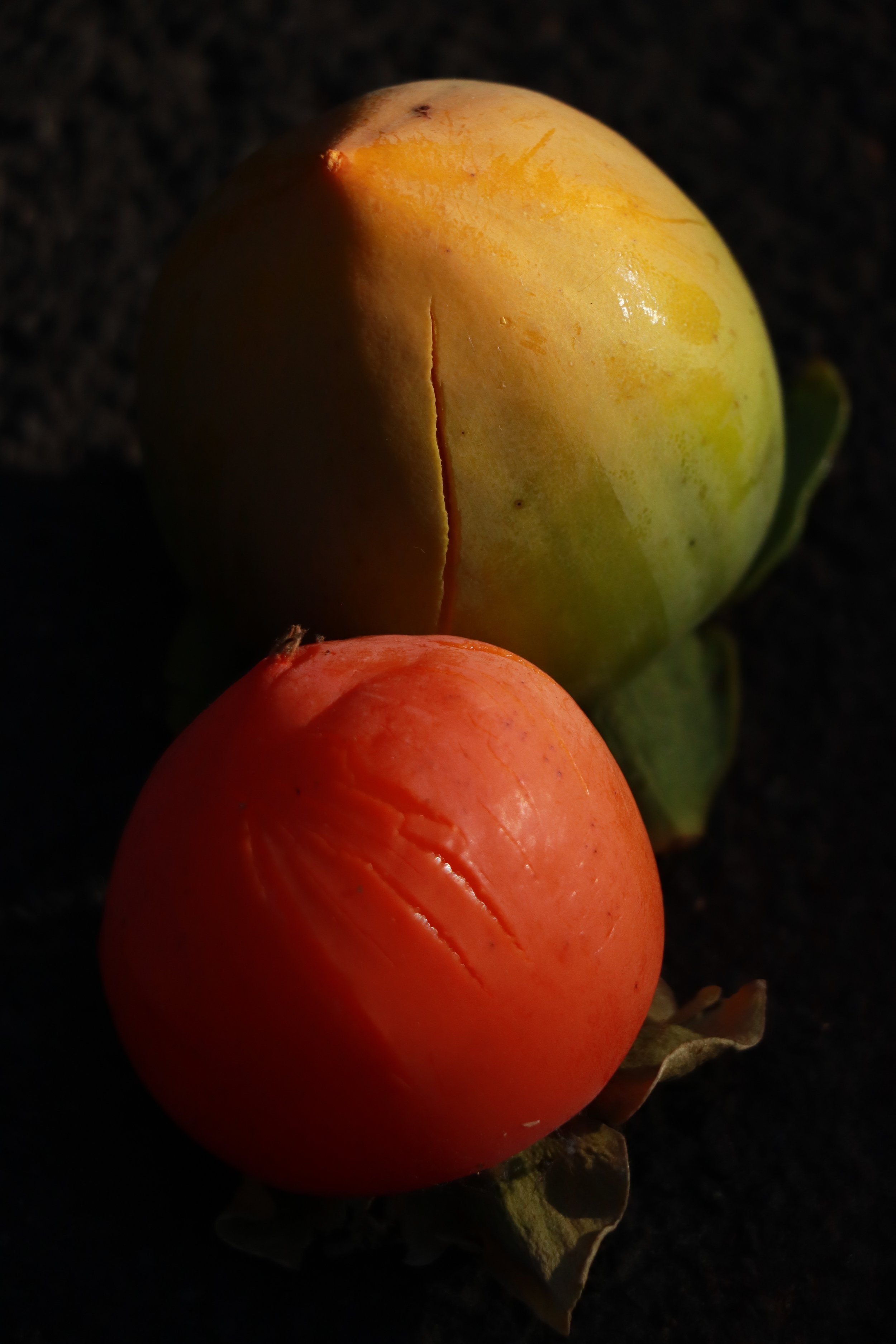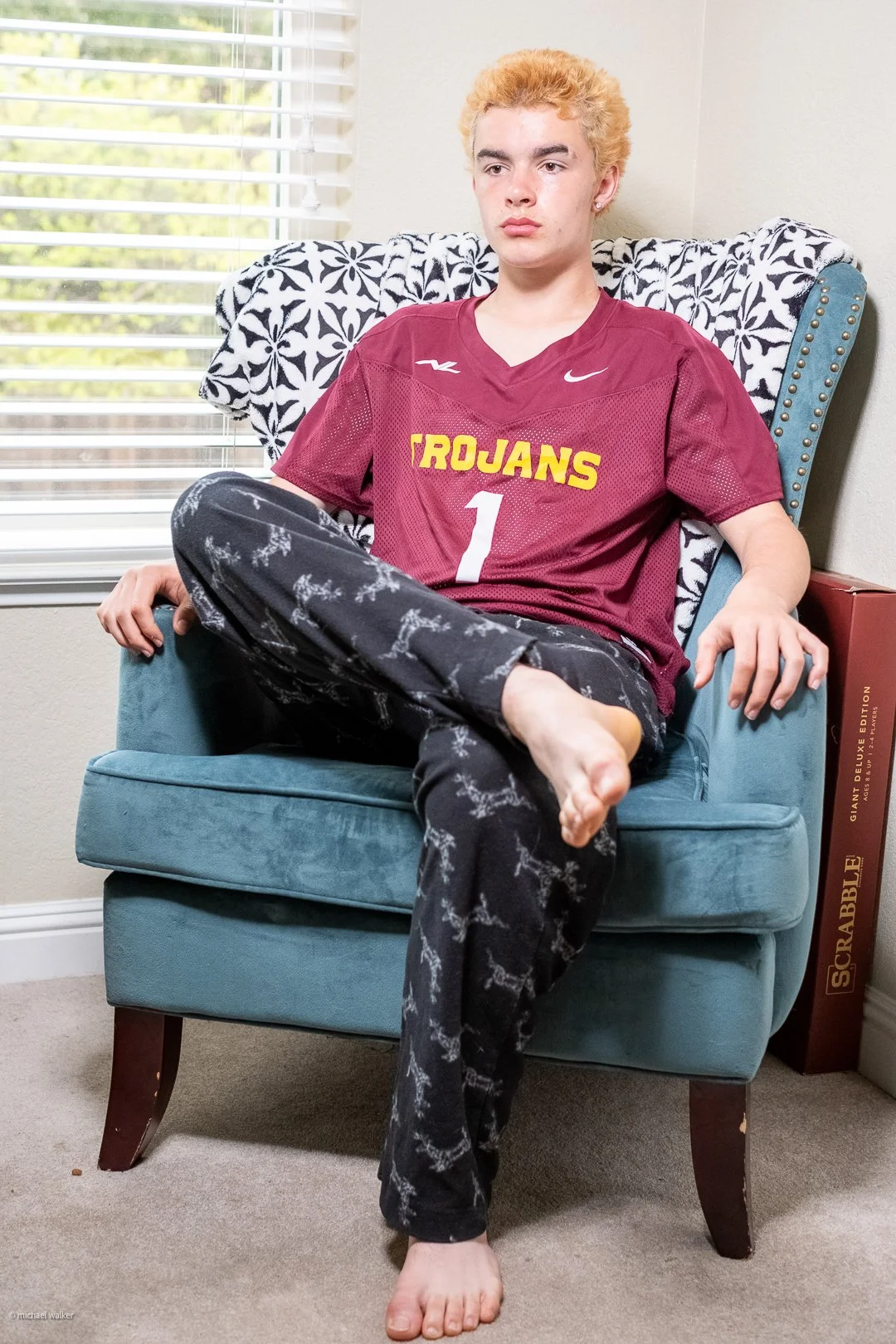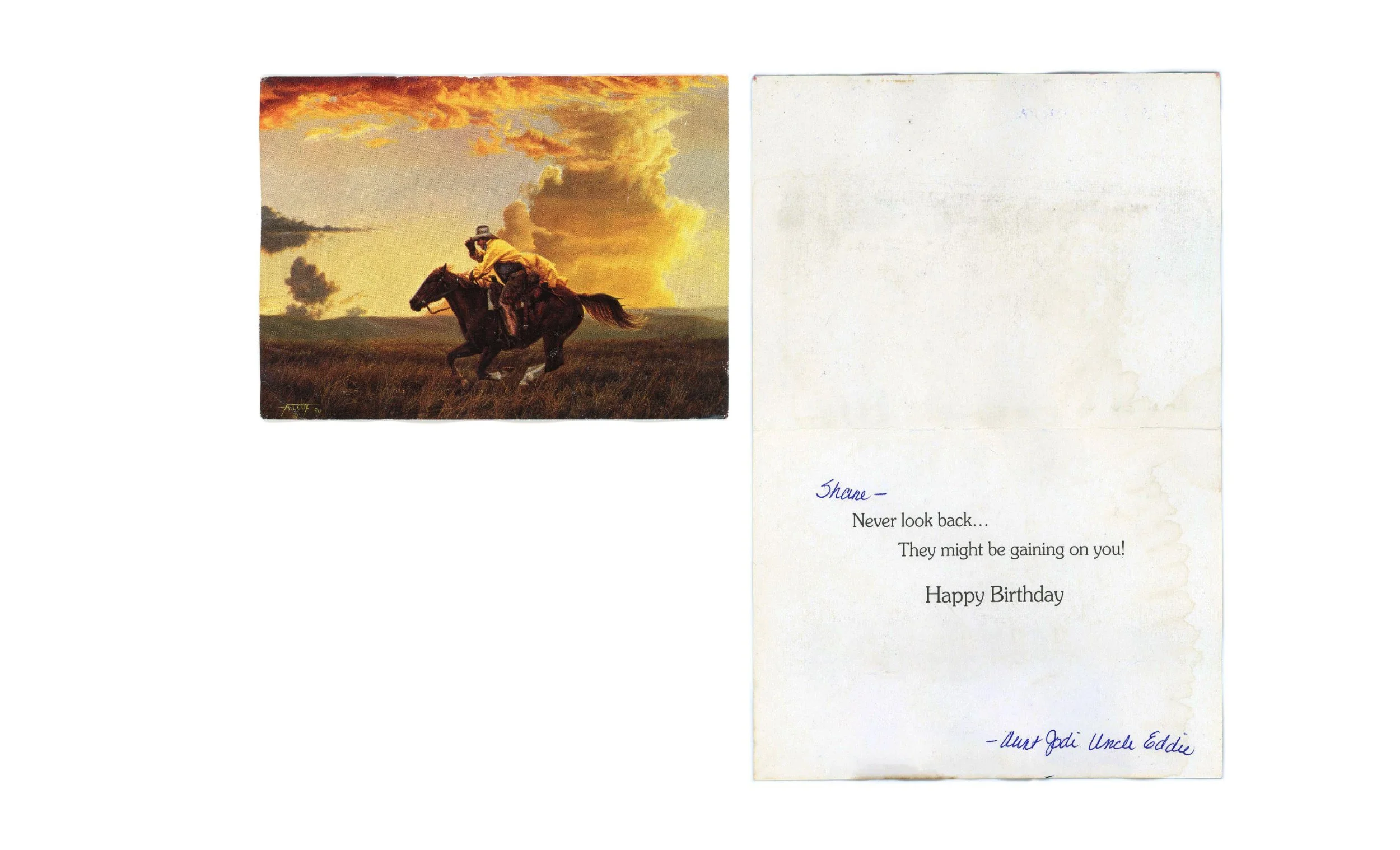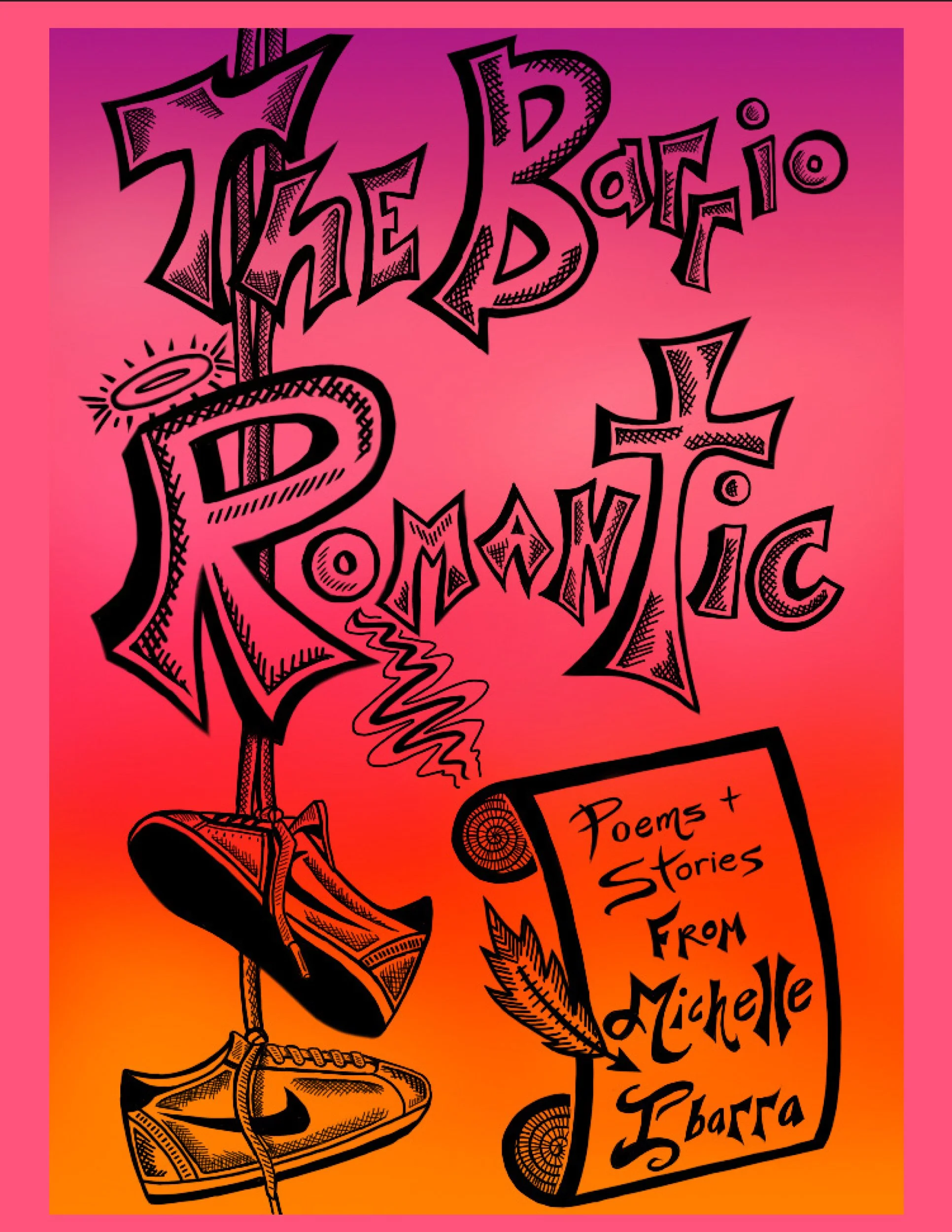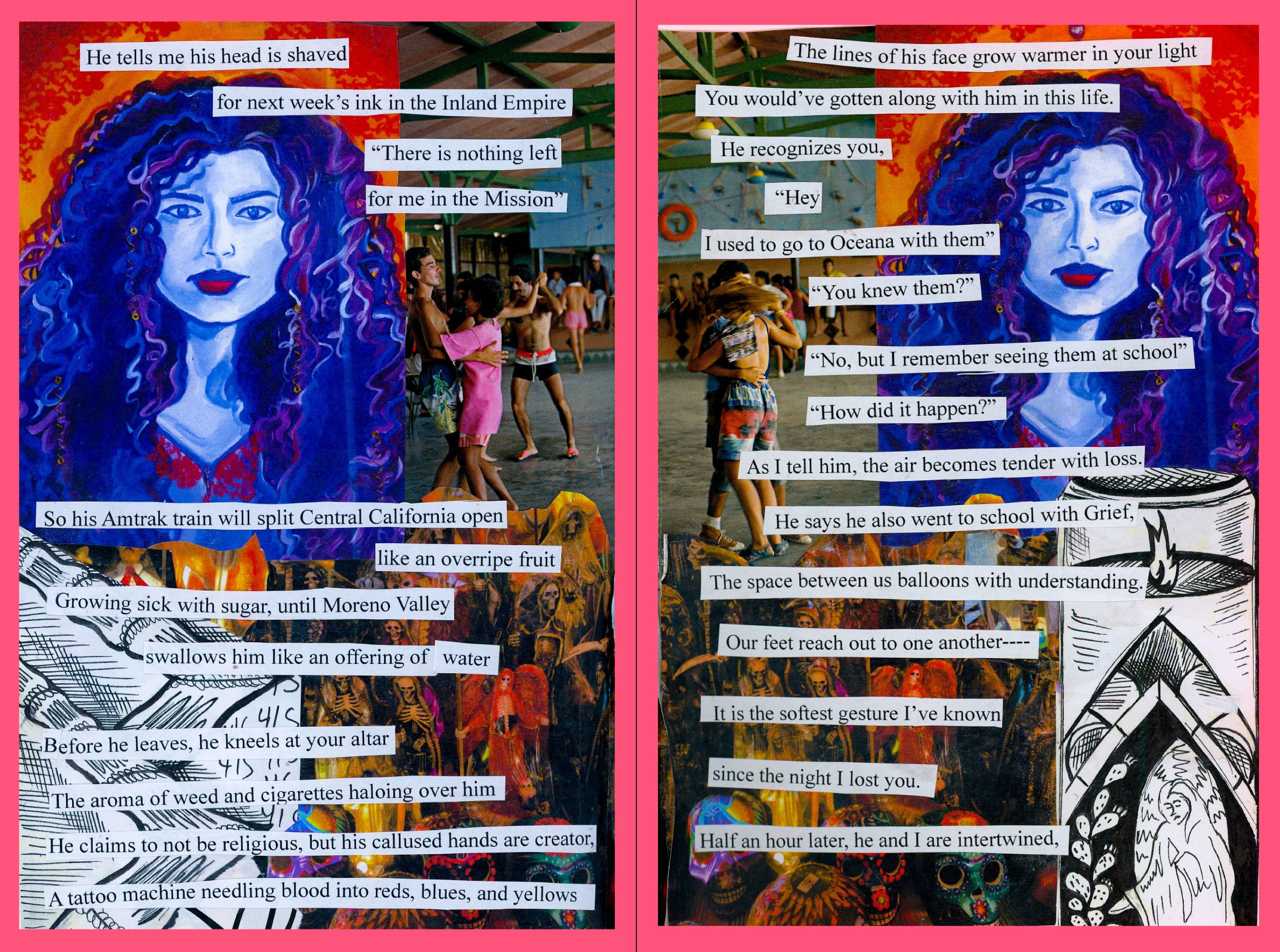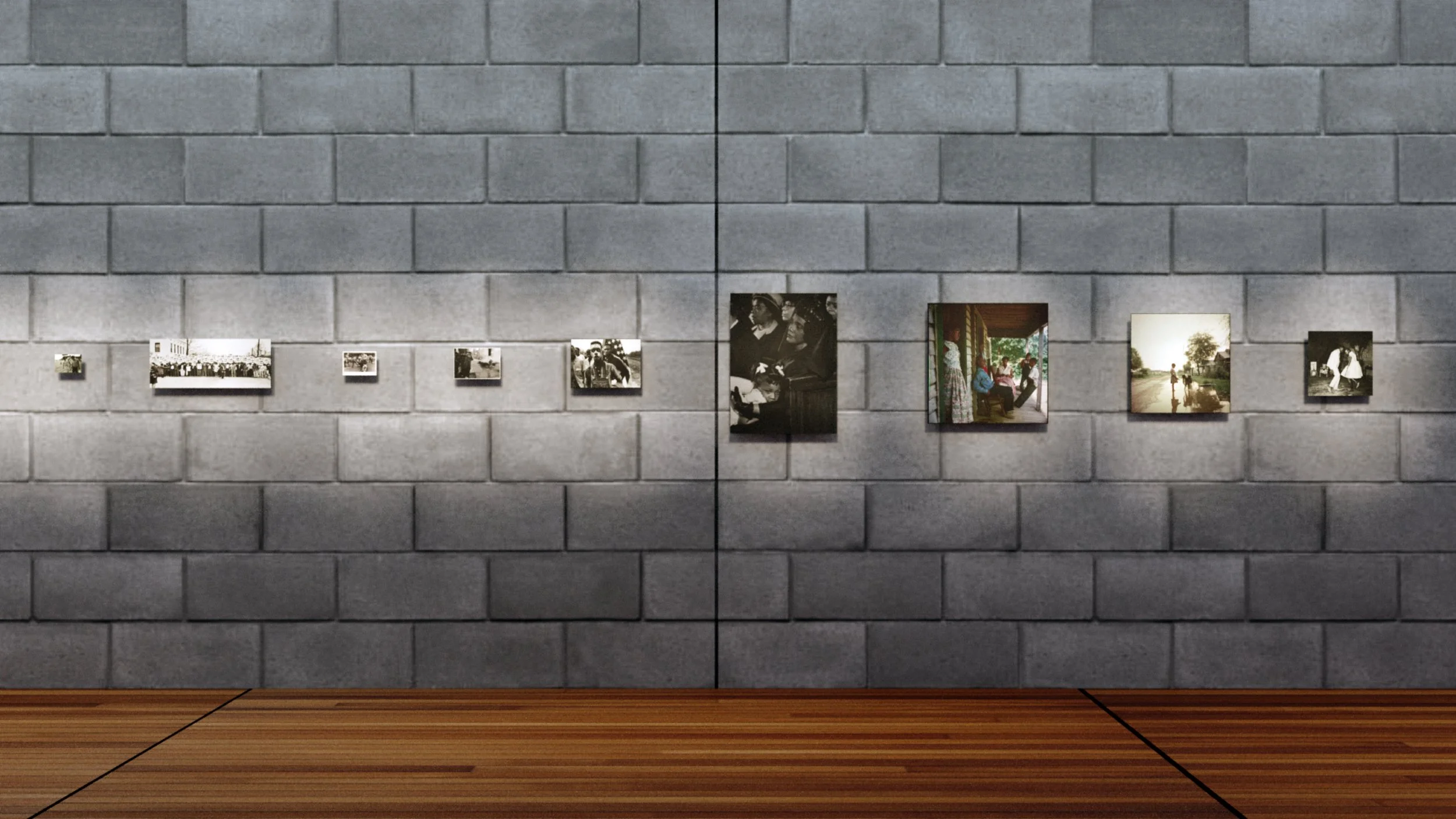Teaching: Student Work Samples [Photography Courses]
Black-and-White Darkroom Photography
Introductory Level: Tools 1: Introduction to Black & White / Introduction to Photography / Light & Shadow (California College of the Arts, Las Positas College, and Stanford University)
Intermediate Photography (San Francisco State University)
Exploring Fundamentals
Students learn the fundamentals of 35mm SLR camera operation through a series of film rolls that each cover a genre-based topic: portraiture, place/landscape, and abstraction/non-narrative storytelling.
Each roll covers baseline technical skills through a series of prompts, including concepts of depth of field / aperture, motion blur / shutter speed, and bracketing. Students also explore visual elements of photography, including elements of composition (rule of thirds, angle of view, focal distance).
Students explore aesthetic and technical dynamics of light and shadow, using bracketing to approach mixed-lighting scenarios. Students present a series of analog prints that reflect skills using contrast filters and dodging/burning.
Experimental B&W Darkroom Techniques
Students expand their skills in the black-and-white darkroom by exploring alternative printing techniques, including: sandwiching negatives, painting/drawing on and printing with transparencies, photograms/chemigrams/lumen prints, contact printing, multiple print exposures, photomontage, and working with filters/optics. Students are also encouraged to use film as physical material, hand-altering negatives / blank film to print.
“Mistakes” are reframed as possibilities for imagination. Students are encouraged to embrace the unexpected and experiment with material within the darkroom. There is an emphasis on play and imagination to both support comfort/fluency in the darkroom, as well as reimagine what gelatin silver can be in our present moment.
The Photo Essay
Approaches to developing a cohesive series of photographs are explored through the structure of the photo essay. Students select a topic of their choosing, focusing on local community stories and personal connections to the selected topic.
Students in intermediate courses research contemporary and historical photographers for a presentation about expansive approaches in method and material to the photo essay.
Project topics include: the pregnancy and new parenthood of a student’s sister, aftermath of southern California wildfires the student’s hometown, the impact of eviction on a young artist, dynamics of femininity in Salt Lake City, street vendors in the Mission District of San Francisco, and a boating trip exploring a student’s Alaska Native heritage.
Personal Vision
With a focus on genre, students develop a project topic of their own choosing. Students produce a portfolio of final prints, learn match-printing techniques, title their series, and write a project statement based on their photographs.
Students in intermediate courses use fiber paper, learn split-filter printing, dry mount prints, cut custom window mats, and spot-tone their final prints.
Projects include: A Waking Dream, an exploration of portraiture and surrealism; Whale, the unpacking of body image through self-portraiture; The Shape of Water, looking at water through photogram and paper negative techniques; andres, a portrait of San Jose youth through the photographer’s brother; Querencia, returning home to San Diego as the photographer’s graduation nears.
Introductory Digital Photography
Introduction to Digital Photography [online] / Introduction to Photography (Diablo Valley College and Stanford University)
Photographic Seeing
Students begin the semester with weekly assignments that introduce fundamentals of digital camera operation, Adobe Lightroom, and photographic visual elements. The project begins in class with Corita Kent’s viewfinder exercise and a reading of Kim Beil’s Good Pictures, exploring how photography can be a tool to connect with the world in new ways.
Exercises include: Close to Home (focus on a place considered “home” over several days), Looking Out, Looking In (photograph a familiar place and an unfamiliar location at different times of day), and Visual Storytelling (using photography to tell abstract/poetic stories).
Each exercise contains a series of technical and aesthetic prompts to scaffold fundamental skills and build fluency with core photographic language.
Stories of Us
Portraiture is introduced through a series of assignments that explore the expansive range of the genre. Students photograph self-portraits, individuals close to them, people they do not know, and explore unexpected ways of making portraits.
Emphasis is placed on students looking inward, considering the communities and issues that matter to them, then translating those ideas to portrait-based storytelling.
In their assignments, students stage portraits with controlled lighting as well as take more observational or documentary approaches. In-class presentations and discussions focus on historical and contemporary approaches to portraiture, introducing students to a range of how they might (re)imagine the genre.
The Matter of Light
[Lighting Techniques]
Light is examined as a tool and material through a series of exercises that tackle a range of genres in relationship to relevant lighting scenarios. Students deconstruct light in existing photographs to determine possible lighting techniques used. Light is also explored as subject matter for storytelling in a photograph. Emphasis is also placed on manual white balance and understanding color temperature.
Students explore basics of studio lighting with a focus on DIY techniques to use outside of the traditional lighting studio.
Topics explored include working with natural light, using light modifiers, approaches to on-camera flash, “painting with light,” multiple and long-exposures, and multi-light set-ups.
The Sound I Saw [Developing a Series]
This project introduces students to the photographic series through a three-part process: research and inspiration, planning, and creation.
Students gather three inspiration points: a song or sound, a text, and a photographer. They then construct a project idea that incorporates the sound and text, and work the inspiration photographer into their visual approach.
After writing a project proposal that outlines their idea and plan, students photograph their series over several weeks and work in Adobe Lightroom to create a cohesive visual style in post-production. Students also explore strategies for editing and sequencing to present the final portfolio of images in a critique.
Exploring Genres [Directed Projects]
For their final project, students develop a series based on a self-chosen topic. Students select one or two main genres for their project and work towards a cohesive body of photographs.
The series is photographed over a series of multiple weeks, a process including photobook research in the library and writing a project proposal. Students also engage in small-group editing/sequencing workshops. The project is titled and presented in a digital or print format alongside a written project statement.
Projects include: a sibling’s gender transition, behind-the-scenes at a boxing match, living with “a zoo” of family pets, Chicanx culture in San Jose, street scenes in San Francisco, mother-son dynamics, water scarcity at the Hoover Dam, and memories of home in rural Norway.
Intermediate and Advanced Photography Courses
Documentary Photography and DIY Publishing (Stanford University)
History of Photography (California College of the Arts)
Investigations 1: Methods & Materials [online] (California College of the Arts)
Documentary Projects: Day in the Life
The Day in the Life project begins the Documentary seminar. Students focus on telling the story of a single person, through the lens of daily routines.
Emphasis is placed on looking to one’s local community for stories and strong relationship-building with those who are being photographed. The class explores ethics of documentary representation through readings and group discussion.
Students use traditional components of the photo essay when photographing and making selections. Students also learn how to pitch stories and prepare files for news desk submission, including captioning, file formatting, and metadata processing.
Projects represented here showcase stories of two individuals living in East Palo Alto.
Documentary Projects: Focus on Place
Students revisit a single location over a number of days, focused on telling the story of the place through its people, spaces, and things. Emphasis is placed on expressing a cohesive point-of-view through the form of a magazine feature.
Projects are presented with a project statement and are photographed over multiple weeks. Students also present a series of final inkjet prints. Students explore paper types to make intentional selections based on their work and also learn large-format inkjet printing.
Projects represented include: PRL, a maker space with emphasis on the material processes and community support within, and KZSU, an on-campus/community radio station, focused on its long-time leader.
Documentary Projects: Sports Stories
Students photograph stories about on-campus collegiate athletics, which can include teams the students may be in.
Emphasis is placed on looking for behind-the-scenes moments, looking beyond a surface-level narrative about the selected team/sport. Students learn camera and lighting techniques to photograph events and in-game. Students spend extended time with their selected teams, traveling with them or attending several home games.
Projects represented include: a term with the Stanford Women’s Basketball Team, focused on the head coach during the photographer’s last season as a player, and a series about the Stanford Diving Team through the lens of diving technique and its impact on the body.
Photobook Proposal
Students conceptualize and design a photobook based on a single photographic project. Students create a layout in InDesign and create a physical maquette, either through a print-on-demand service or as a handmade artist’s book.
Students work through a series of drafts in in-progress critiques and small-group workshops. Through library visits and studying published works, they research layout and editing/sequencing, as well as form and material. Students are encouraged to incorporate archival material, text, and analog forms into their books. The class has studio visits with guest artists / publishers.
The final book is presented with a proposal that includes a production budget and formal considerations including binding, page count, paper type, and print size.
History of Photography: Exhibition Proposals
Written papers in History of Photography include practical applications for photography students to respond within their creative practices. This enables students to develop direct links between historical coursework and their work as contemporary photographers.
In this assignment, students develop a group exhibition idea that integrates historical and contemporary photography, writing a proposal for a specific site and creating an image checklist.
Students can then create a physical or digital mockup of their proposed exhibition or a series of original artworks inspired by the artists and/or historical processes represented in their exhibition.



